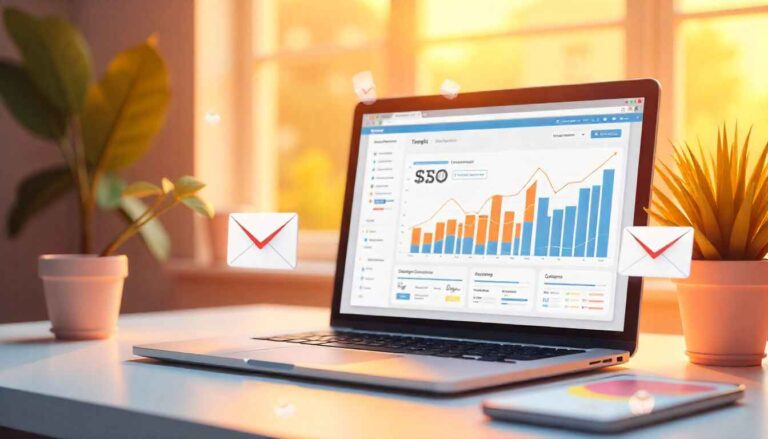Cut Your Bounce Rate: 6 Proven Tips That Work
Let’s be honest—a high bounce rate sucks. You spend all that effort getting people to your website, only to watch them leave within seconds.
No clicks. No scrolling. No conversions.
Just a quick exit and a digital dust cloud.
But why does this happen? And more importantly—how do you stop it?
You don’t need guesswork. You need real strategies backed by actual data—and that’s exactly what you’ll get here.
Here are six proven ways to lower your bounce rate, keep visitors engaged, and maybe even make Google fall a little more in love with your site.
1. Make Your Website Lightning-Fast
Let’s cut to the chase: slow websites lose visitors. Full stop.
Google studies show that if a mobile page takes over 3 seconds to load, more than 50% of users are likely to leave before it finishes loading. Yep—50%+ gone before they even see your content.
Why so impatient? Because people expect instant everything. Think fast food, fast delivery, and yes—fast websites.
Here’s what usually slows things down:
- Oversized images
- Too many scripts
- Bloated themes or plugins
- Cheap hosting
Quick tip: Use free tools like PageSpeed Insights or GTmetrix to spot the speed bumps on your site.
2. Nail Your First Impression in Seconds
When someone lands on your site, you have just a few seconds—sometimes less than two—to make them feel like they’re in the right place.
And if your homepage looks like a confusing jumble of text, ads, or vague headlines? They’re out of there.
Here’s the secret: Clarity is more powerful than cleverness.
Instead of something like:
“Welcome to our digital world of solutions!”
Try:
“We Help Small Businesses Build Killer Websites—Fast.”
That’s clean, confident, and instantly informative.
Pro tip: Use a short, punchy headline followed by a one-sentence value statement and a clear call-to-action. Tell people what you offer and why it matters—right away.
3. Design for the Way People Actually Read
People don’t read websites word for word. They scan.
This isn’t just a theory—it’s proven by heatmaps and eye-tracking research. Most people scan pages in F-shaped or Z-shaped patterns.
If your content is just a big block of text? They’ll likely skim right past it—or leave altogether.
So, how do you design for short attention spans? Here’s what you need to know:
- Use big, bold headers to break up sections
- Add bullet points (like these!)
- Include whitespace—don’t cram everything together
- Use visuals to guide the flow
Think of your site layout like a map. Make it easy for visitors to know where they are and where to go next.
4. Give People What They Came For
Imagine clicking on a blog titled “Best Budget Travel Tips” and landing on a sales page for luxury luggage. Instant back button, right?
That’s what we call intent mismatch—and it’s a bounce magnet.
People land on your page with a goal. If your content doesn’t match that goal, they leave.
Here’s how to avoid that:
- Understand search intent behind every keyword
- Make sure your page answers the question or solves the problem
- Keep the content relevant, helpful, and clear
For instance, if someone searches for ‘how to fix a leaky faucet,’ don’t give them a long history of plumbing. Just show them simple, step-by-step instructions—ideally with pictures or a video. That’s exactly what they’re looking for.
Golden rule: Make sure your content lives up to the promise in your headline.
Add a Touch of Interactivity
Let’s talk engagement.
A static page might get skimmed. An interactive one? It gets attention.
No, you don’t need fancy animations or complicated features. Even small things like a quiz, a simple calculator, or a fun poll can grab attention and get users involved.
Interactive content can double user engagement, according to marketing research. Why? Because people like to do, not just read.
Some ideas:
- Product finders (“Which X is right for you?”)
- Feedback forms
- Interactive infographics
- Light chatbots for FAQs
Just make sure whatever you add enhances the experience, not interrupts it.
Make Your Site Look Great on Mobile
Here’s a truth bomb: Most of your traffic is probably mobile.
If your site isn’t optimized for smartphones and tablets, you’re already losing a huge chunk of visitors.
And it’s not just about looking good. It’s about:
- Easy navigation
- Fast load times
- Buttons that are actually tappable
- No overlapping text or broken layouts
Google even uses mobile performance as a ranking factor—so a bouncy mobile site can hurt your traffic too.
Try Google’s Mobile-Friendly Test and see where your site stands. A few layout tweaks could make a world of difference.
Bottom line: Design for fingers, not just mouse clicks.
Bonus Tip: Always Be Testing
Here’s the golden rule: You’re not your audience.
You might think your page is perfect. But what works in your head might not work in the real world.
That’s why A/B testing is your best friend.
Try testing:
- Different headlines
- Button colors or wording
- CTA placement
- Content layouts
- Images and graphics
You’d be surprised how much difference a tiny change can make. Even switching “Buy Now” to “Get Yours Today” can reduce bounce and increase clicks.
Tools like Google Optimize or VWO make it easy to test versions without needing to be a developer.
Final Thoughts: Bounce Rate Isn’t the Enemy—Bad Experiences Are
Let’s reframe this whole bounce rate thing.
Your visitors aren’t bouncing because they hate you.
They’re bouncing because something’s off—slow speed, unclear messaging, mismatched content, or poor mobile experience.
Fix those issues and your bounce rate will naturally go down. Even better? Your visitors will stay longer, trust more, and convert faster.
Here’s a quick recap:
- Speed up your website
- Clarify your message immediately
- Guide readers with smart design
- Match content to user intent
- Add simple interactive elements
- Make it mobile-perfect
- (And test everything!)
Bounce rate isn’t just a number. It’s a signal—a pulse check on how well your website is doing its job.
Listen to it, act on it, and watch your site go from “meh” to magnetic.







